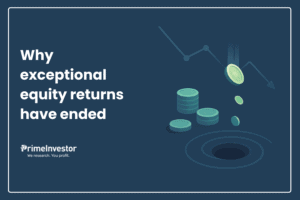Why did the government come up with NPS Vatsalya – a retirement savings plan for children, you might ask. Recent research suggests that we Indians may need a corpus equal to over 30 times our expenses at the age of 60, to retire comfortably.
Getting to this kind of number can be a very tall ask if you start saving in your 30s or 40s. You may have missed the bus already. But you can still give your children a head-start on their retirement by kicking off their retirement savings while they are still in their diapers 😊!

This seems to be the intention behind the launch of NPS Vatsalya – the new junior version of the National Pension System (NPS) Tier 1 account. But we were disappointed to find that the NPS Vatsalya has been saddled with unfriendly features copy-pasted from the NPS for adults. We especially don’t like the Chakravyuha-like features that prevent exit from the vehicle. We review the scheme here.
How to start a NPS Vatsalya account
Either parents or legal guardians of minors who are Indian citizens can open the NPS Vatsalya account in the minor’s name. KYC norms will be applied to the parent/guardian. Parents or guardians who are NRIs or OCIs can open this account, provided the minor is an Indian citizen.
Proof of date of birth of the minor by way of PAN, birth certificate, school leaving certificate, mark-sheet from ICSE/CBSE or a passport, is required to open the account.
The account can be opened through banks, brokers, post offices or any other Points of Presence authorised by the Pension Fund Regulatory and Development Authority (PFRDA). The account can also be opened directly through eNPS.
Contributions can be invested in any of the funds and managers who are empanelled with NPS. Subscribers can opt for Auto Choice (fixed allocations between equities, corporate bonds, gilts and alternative assets decided by the PFRDA) or Active Choice, where they themselves decide on the allocation.
Once the minor turns 18, the account will be converted into a NPS Tier 1 account with the same PRAN (Permanent Retirement Account Number). A 3-month time window will be allowed for the minor to complete a fresh KYC at 18. You can find more scheme details here.
Positives of NPS Vatsalya
The positives of NPS Vatsalya as we see it, are as follows:
- Shot at big corpus: The super-early start maximises the chances of your child getting to a hefty corpus at retirement. If you start investing for retirement at 60 at the age of 25, to get to a Rs 10 crore corpus, you will need to invest Rs 26121 per month in SIPs returning 10% (Check it out here: PrimeInvestor SIP to target calculator). But if you start at the age of 10, you need to invest only Rs 5,725 per month in the same SIP. Most of us don’t realise that Time is a far more powerful variable in the compound interest formula than the Rate of return.
- Seamless transition to NPS: The automatic conversion of the Vatsalya account into the main NPS account will save your child from booking profits or paying capital gains tax on the proceeds when he or she attains majority and wants to start on retirement savings.
- Flexible contributions: With only Rs 1,000 a year required to keep the account alive, this is a flexible scheme. You can invest higher amounts when you have higher surpluses to spare and just Rs 1000 when you don’t.
- Low cost: This is a low-cost scheme like the NPS, with annual fund management charges at 0.0467%-0.09%. There are additional flat charges towards transactions, withdrawals and account maintenance, which are not material.
- No capital gains tax on rebalancing: Long-term returns from any portfolio depend on starting with the right asset allocation, switching managers if they don’t perform and rebalancing between assets based on changing market conditions and age. NPS Vatsalya makes such rebalancing both easy and cheap. The scheme, like NPS, will allow free switches every year. Shifts between managers or assets will not be treated as redemption and will not be charged to capital gains tax. This can save you a packet. For all other investment vehicles whether stocks, bonds or mutual funds, rejigs in asset allocation or managers incur capital gains tax.
- Better than fixed income vehicles: The stable corpus and investments only in high-quality paper (top 200 stocks in equity and above A-rated bonds in debt) may help Vatsalya deliver better returns in the long run than other fixed return vehicles such as Sukanya Samridhi Scheme National Savings Certificates or PPF which are favourites for children’s savings.
Limitations of NPS Vatsalya
- Limits on equity exposure: A rolling return analysis clearly shows that for goals that more than 10 years away, equities deliver far better returns than bonds. Therefore, it is not clear why subscribers in NPS Vatsalya have been offered the same asset allocation choices as the mainstream NPS, where the maximum equity allocation is capped at 75%. If you choose Auto Choice under the scheme, equity allocations will be set at 25%, 50% or 75% under the three lifecycle plans. If you go for Active choice, the equity allocation will still be capped at 75%. If you are investing towards your child’s retirement which is a few decades away, you can easily afford to invest in 100% equity vehicles. In fact, over the 20 years plus horizon, you can even go with riskier equity categories such as small-cap or mid-cap funds.
- No early liquidity: As a parent, you may want the flexibility to withdraw the money you’ve invested in your child’s name if the need should arise. You may need the money in a family emergency or you may like to use it to fund your child’s education or skilling. But NPS Vatsalya only allows you to withdraw 25% of your own contributions (excluding the returns) until the child turns 18. Even this partial withdrawal requires you to provide proof that you will be using it for education of your child, treatment of the child’s illness or for disability of 75% or more. You can only make a maximum of 3 such withdrawals, all within the 25% cap. The withdrawals can be made only after a 3-year lock-in. All these conditions for an investment you made from your own money, where the Government has no role in delivering returns, are a bit too much.
- No lumpsum maturity proceeds: When your child turns 18, you or your ward may like to use the maturity proceeds for higher education, skilling or other needs. But the NPS Vatsalya doesn’t allow this. If your child does not opt to transition the account into a NPS Tier 1 account for his/her own retirement, he/she cannot withdraw the accumulated balance in the scheme. Instead, 80% of the balance will be used to buy an annuity, while only 20% can be withdrawn as lumpsum. The only exception to this rule is if the accumulated balance in the scheme is Rs 2.5 lakh or less. A sum of Rs 2.5 lakh have very little value a decade from now.
- Taxation: The government has not specified the taxation rules governing the scheme. It is not clear if any tax concessions are envisaged on the investments, on the lines of the NPS Tier 1 account. On maturity, the requirement that 80% of proceeds be invested in an annuity, is very tax-inefficient. Annuity income is taxed at the slab rate akin to salary income. Whether the 20% lumpsum withdrawal is tax-free is also not known. The government seems to be expecting that most investors will just continue to hold and build on Vatsalya until they retire. Given the vicissitudes of life, expecting folks to commit funds for 50 years or more with very few exit options, seems unrealistic.
Our take
Parents looking to give their wards a head start on life goals, including retirement, can simply invest in the minor’s name in equity funds. This way, you will have flexibility on starting or stopping SIPs and on withdrawing the money when or your ward need it. If you favour a buy-and-hold approach, index funds on broad market indices such as the Nifty50, Nifty100, Nifty Midcap 150 will do the trick. If you prefer an active approach, you can go with recommended aggressive equity funds from Prime Funds.






7 thoughts on “NPS Vatsalya – an option to consider now?”
NPS for adults also has almost all the same limitations. Would you say a young adult in their first job should also not get into NPS?
What if a parent gets the account going with only small amounts they can easily spare and allow the child to continue? The purpose here to just get started, not looking at the amount. Is this worth the hassle over mutual funds?
The labeling of a scheme for retirement might help for the mental accounting habit.
NPS is not superior to equity funds for retirement. But it may suit those who can’t stay the course on investing without a compulsory lockin. With Vatsalya it is the parent who is forced into compulsory lock-in for childs retirement which seems unnecessary.
“No taxation” on rebalance is a good point, i never thought the rebalance in that aspect. Is this benefit applies to current ‘Tier-2 All Citizen’ option too?
Yes it does
“Instead, 80% of the balance will be used to buy an annuity, while only 20% can be withdrawn as lumpsum”. Isn’t it 60-40 ratio? Please cross-check once.
It is 80-20 only. Have taken it from pfrda doc
60-40 is the ration at retirement age – 58 or 60+, before that if one prematurely withdraws then it is 80/20 for NPS for adults as well..
Comments are closed.